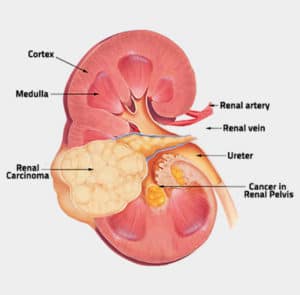Contents
show
What is Blue Waffle Disease?
Listen to the blog post
- Blue waffle disease is an imaginary mythical sexually transmitted disease believed to be affecting females only.
- “Waffles” refers to “vulva/vagina” and “blue” stands for the “fictional symptoms” of the vagina.
- According to legends, this disease affects the vulva area of a female, disfiguring it and turning it into dark blue color.
How Blue Waffle Disease came to be known?
- In 2010, a disturbing image hit the internet showing a dark blue, pus-filled, scabbed lesion in the labia.
- It was later proven to be photoshopped and an internet hoax.
- It is also possible that the dark blue color of the vulva in the picture is due to the application of a Gentin Violet stain on the vulva to treat yeast infection. Gentin violet gives a characteristic purple/dark blue color.
- There are several pictures circulating on the internet showing blue genitalia of females, but there are no known STDs that actually make the vulva turn blue in color.
Is it real or fake?
- Blue waffle does not really exist, but rather it is a rumor spread through online sources
- So far, there is not any valid medical evidence of its existence.
- There is much false information about this fake disease on the internet and its facts vary from site to site.
What can be the intentions of spreading fake information about blue waffle disease?
- The myth about blue waffle disease’s transmission is that it is rumored to affect only women, perhaps may be due to some society’s tradition to vilify women. Sexually active women are portrayed to be “badly cultured” and the picture itself was a warning for women to stay away from sex.
- It might be just random content spread by teenagers on the internet for jokes.
What are the probable causes that may give rise to such an appearance of the vulva?
- Poor hygiene
- Frequent sex
- Multiple sexual partners
- Unprotected sex
What are the alleged Fictitious Symptoms of blue waffle disease?
- Dark-colored labia, making it look like “blue”. This blue coloration may be due to increased blood flow as a result of sexual arousal or due to chronic irritation or yeast infection of the vulva.
- Redness and irritation of the vagina.
- Itching and burning sensation in the vagina.
- Foul-smelling discharge from the vagina.
- Pain during sex.

Is blue waffle disease an alarming issue and should we be worried about it?
Blue waffle disease is not a real thing, but other sexually transmitted diseases that cause vaginal infection due to poor hygiene/un-protected sex/multiple sexual partners, etc are real and something to worry about. For examples-
- Gonorrhea
- A bacterial infection caused by Neisseria gonorrhoeae, affecting the genitals, anorectal region, and throat and transmitted by having vaginal, anal, and oral sex with the affected person. It is characterized by pus per urethra, per vagina, or per rectal. Skin rash, fever, and arthritis are also common in gonorrhea.
- Chlamydia
- A sexually transmitted disease affecting both sexes and caused by Chlamydia trachomatis. Its presentation can similar to gonorrhea.
- Trichomoniasis
- A parasitic sexually transmitted disease causing foul-smelling vaginal discharge and itching.
- Genital herpes
- A viral infection caused by Herpes simplex 1 and 2 and transmitted through sexual contact. It is usually characterized by multiple painful genital ulcers.
- Human Papillomavirus infection
- One of the most common STDs, commonly affecting sexually active females and may lead to genital warts and cancer of the cervix.
Is there any treatment available for blue waffle disease?
Since it is a fictional disease, there is no known specific treatment discovered so far for blue waffle disease.
What are the preventive measures to protect oneself from getting affected by the ”rumored fake blue waffle disease” or any other STDs?
- Proper hygiene
- Maintaining sexual hygiene is very important in order to prevent the occurrence of sexually transmitted diseases.
- Avoid unprotected sex
- The use of barrier contraception such as condoms is very effective to prevent the spread of STD from an infected individual. Condoms should be properly removed and disposed of after use in order to prevent contamination.
- Avoid multiple sexual partners.
Please write to us in the comment section if you have liked the article. Check our services.



